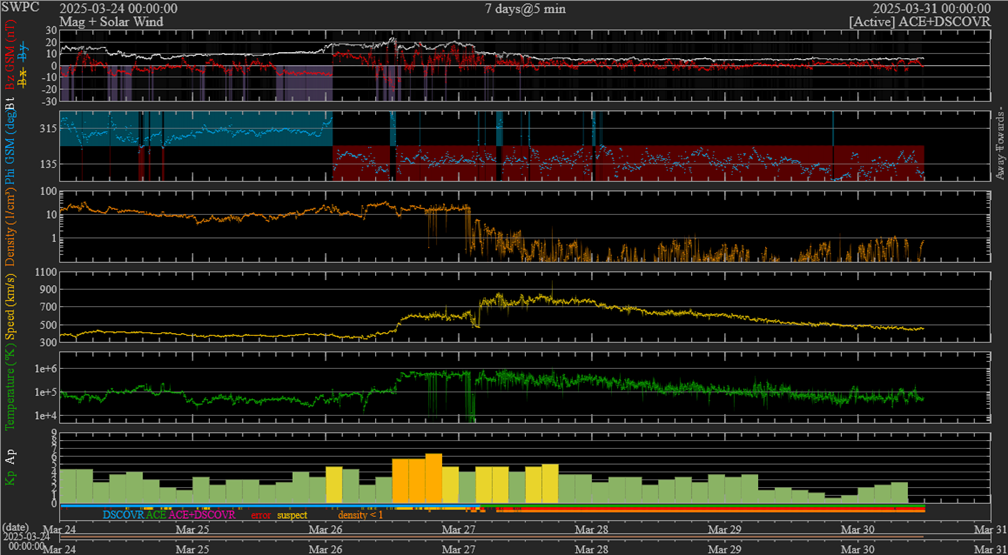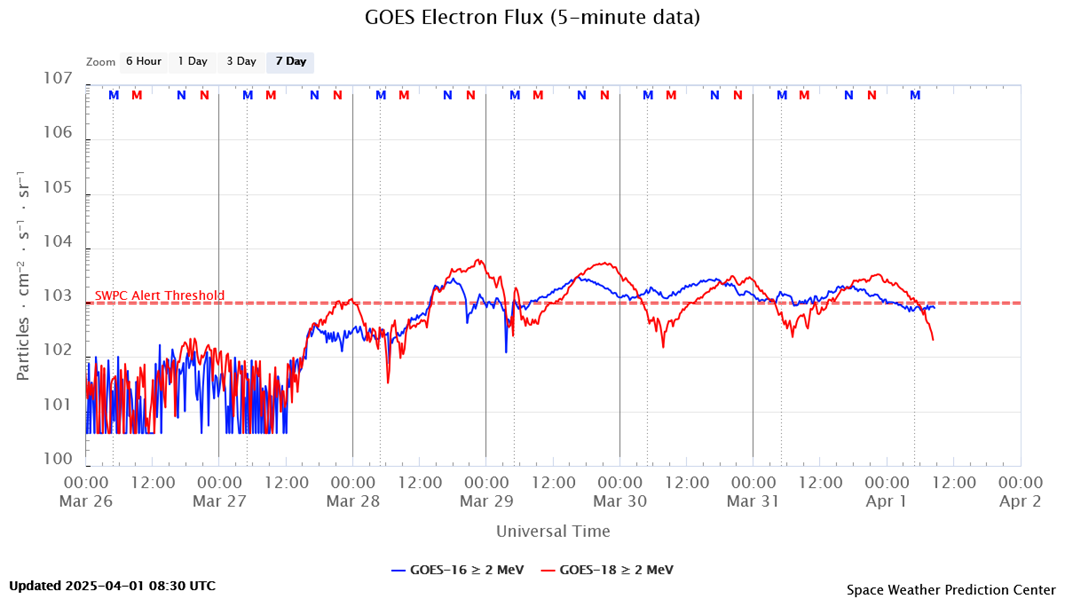Coronal holes are regions in the hot solar atmosphere ("corona") where the plasma density at that temperature is very low compared to its surroundings, and thus they look like dark shapes in the corona. Linked to unipolar, open magnetic fields stretching into space, they are the source of the high-speed solar wind which can create geomagnetic disturbances. A large CH, emanating from the southern solar pole and reaching out all the way to the solar equator, started transiting the Sun's central meridian on 23 March. The CH had a positive magnetic polarity, i.e. the magnetic fields were pointing away from the Sun. The impressive size of the CH can be gauged from the SDO/AIA image underneath, showing the Sun in extreme ultraviolet (EUV) at temperatures of more than 1 million degrees. The coronal hole is the irregular, dark shape in the lower portion of the solar image.

The associated high speed stream (HSS), preceded by a compression region (CIR - see this STCE newsitem), started to influence the earth environment from 26 March onwards. Moderate geomagnetic storming was observed during the second half of 26 March. The solar wind speed gradually increased from about 350 km/s to values around 830 km/s on 27 March (yellow curve in the DSCOVR graph of solar wind data underneath). Such a high velocity -from a CH- has not been since the declining phase of the previous solar cycle.

The wind speed stayed above the critical threshold of about 500 km/s from 26 March to late on 29 March. This drove the greater than 2 MeV electron flux over the 1000 pfu alert threshold from 28 March onwards (GOES graph underneath; "M" = local midnight, "N" = local noon). Satellite operators keep an eye on the number of these particles, because these energetic electrons can penetrate into spacecraft components and result in a build-up of charge within the material. When the accumulated charge becomes sufficiently high, an electrostatic discharge (ESD) or arching can occur. This discharge can cause anomalous behaviour in spacecraft systems and can result in temporary or permanent loss of functionality. A notable example of satellite damage due to ESD is the consecutive outage of Telesat Canada’s Anik-E1 and Anik-E2 geostationary communication satellites on 20 January 1994 that interrupted telecommunication and data transmission services across Canada (Lam, 2017). A view on the evolution of these highly energetic electrons during this solar cycle is at the STCE's SC25 Tracking page.






